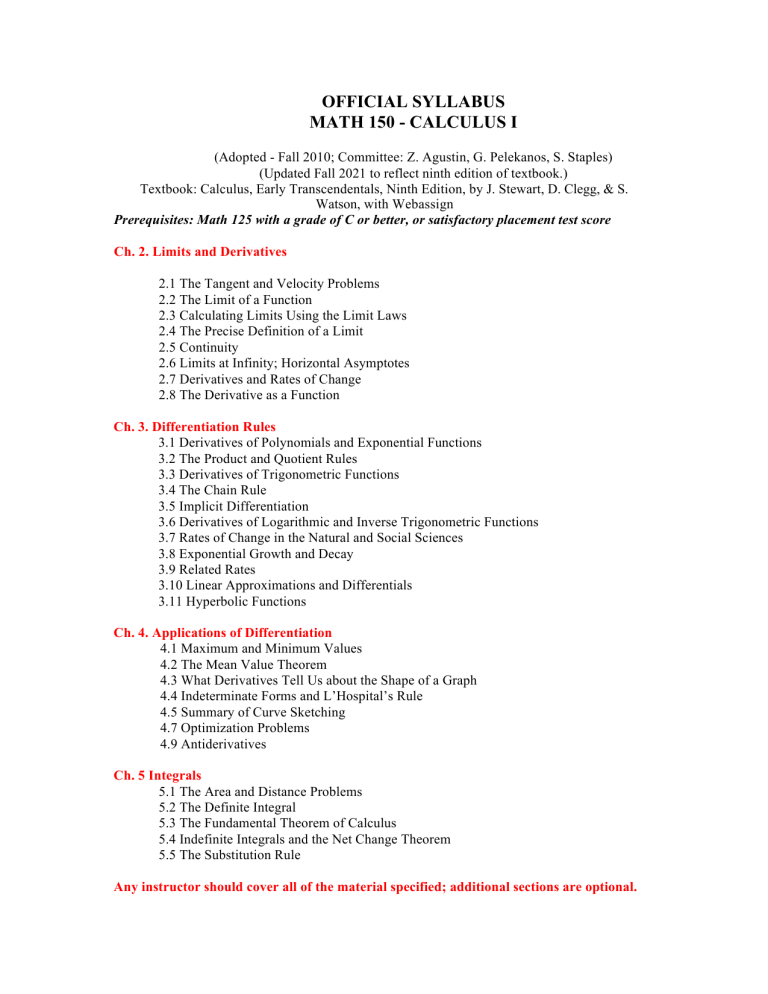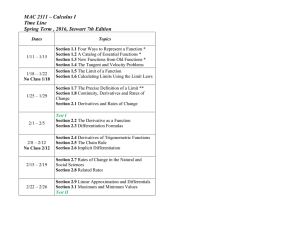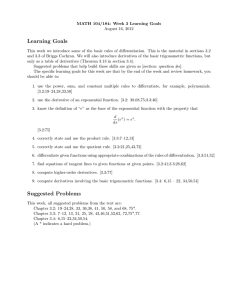
OFFICIAL SYLLABUS MATH 150 - CALCULUS I (Adopted - Fall 2010; Committee: Z. Agustin, G. Pelekanos, S. Staples) (Updated Fall 2021 to reflect ninth edition of textbook.) Textbook: Calculus, Early Transcendentals, Ninth Edition, by J. Stewart, D. Clegg, & S. Watson, with Webassign Prerequisites: Math 125 with a grade of C or better, or satisfactory placement test score Ch. 2. Limits and Derivatives 2.1 The Tangent and Velocity Problems 2.2 The Limit of a Function 2.3 Calculating Limits Using the Limit Laws 2.4 The Precise Definition of a Limit 2.5 Continuity 2.6 Limits at Infinity; Horizontal Asymptotes 2.7 Derivatives and Rates of Change 2.8 The Derivative as a Function Ch. 3. Differentiation Rules 3.1 Derivatives of Polynomials and Exponential Functions 3.2 The Product and Quotient Rules 3.3 Derivatives of Trigonometric Functions 3.4 The Chain Rule 3.5 Implicit Differentiation 3.6 Derivatives of Logarithmic and Inverse Trigonometric Functions 3.7 Rates of Change in the Natural and Social Sciences 3.8 Exponential Growth and Decay 3.9 Related Rates 3.10 Linear Approximations and Differentials 3.11 Hyperbolic Functions Ch. 4. Applications of Differentiation 4.1 Maximum and Minimum Values 4.2 The Mean Value Theorem 4.3 What Derivatives Tell Us about the Shape of a Graph 4.4 Indeterminate Forms and L’Hospital’s Rule 4.5 Summary of Curve Sketching 4.7 Optimization Problems 4.9 Antiderivatives Ch. 5 Integrals 5.1 The Area and Distance Problems 5.2 The Definite Integral 5.3 The Fundamental Theorem of Calculus 5.4 Indefinite Integrals and the Net Change Theorem 5.5 The Substitution Rule Any instructor should cover all of the material specified; additional sections are optional.


